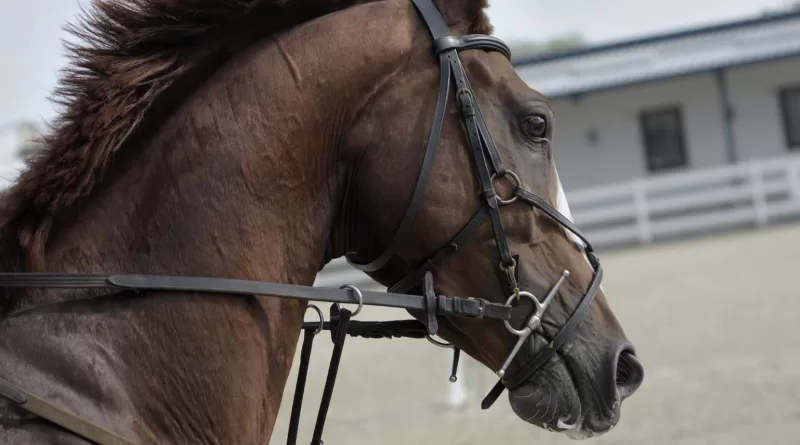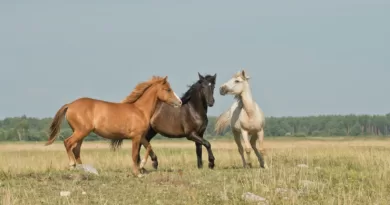How to Steer a Horse
Understanding the Basics of Horse Control
The basics of horse control are fundamental for building a strong foundation in riding. It involves understanding how to communicate effectively with your horse and maintain control over their movements. One key aspect of horse control is establishing a clear and consistent seat and leg position. The rider’s seat serves as their primary point of contact and connection with the horse, providing stability and balance. The leg position, on the other hand, helps to provide guidance and direction to the horse. It is important for riders to develop a strong seat and leg position to effectively control their horse’s speed, direction, and movements. By maintaining a balanced and secure seat and by using their legs appropriately, riders can effectively communicate with their horses and establish control.
Another essential component of horse control is the use of rein aids. Rein aids refer to the movements and signals transmitted through the reins, which are attached to the horse’s bit. They are used to guide and direct the horse, communicate transitions, and communicate specific movements or maneuvers. The rider uses their hands and the action of the reins to send signals to the horse’s mouth, communicating the desired response. It is crucial for riders to have a clear understanding of how to use rein aids effectively, as well as timing and precision. This allows for precise communication and control, ensuring that the horse responds appropriately to the rider’s cues. Developing a solid understanding of rein aids is essential for building trust and cooperation with your horse, and for achieving harmonious communication and control.
Developing a Strong Seat and Leg Position
A strong seat and leg position is crucial for effective communication and control while riding a horse. It provides stability and balance, allowing the rider to stay in harmony with their mount’s movements. To develop a strong seat, it is essential to focus on maintaining a deep and secure position in the saddle. This can be achieved by sitting tall, with an aligned spine, relaxed shoulders, and a slight natural curve in the lower back. Engaging the core muscles and keeping the legs long and draped around the horse’s sides further enhances stability and connection with the horse.
In addition to a strong seat, a rider also needs to develop a solid leg position. The legs play a vital role in directing and influencing the horse’s movements. To achieve this, the rider should strive for a balanced position where the weight of the legs is evenly distributed. The heels should be down, acting as anchors, providing stability and encouraging the horse to move forward freely. The inner thighs and knees should maintain gentle contact with the horse’s sides, allowing for effective aids and communication. By developing a strong seat and leg position, riders can establish a solid foundation for precise control and effective communication with their equine partners.
Using Rein Aids to Communicate with Your Horse
Rein aids are an essential tool for effective communication between a rider and their horse. By using the reins correctly, riders can convey their intentions and give clear signals to their equine partner. The reins serve as a direct line of communication, transmitting commands and cues from the rider’s hands to the horse’s mouth.
To properly use rein aids, it’s crucial to understand the different types of rein pressure. Direct rein pressure is applied by pulling on one rein at a time, signaling the horse to turn or change direction. Indirect rein pressure involves applying pressure on one rein while leaving a slight tension on the other, directing the horse to move their body in a particular way. By mastering these techniques, riders can effectively guide their horse with precision and control.
By effectively utilizing rein aids, riders can establish a clear line of communication with their horse. It is through this communication that the horse understands the rider’s intentions and can respond accordingly. Whether it is guiding the horse through a series of movements or signaling for a change in pace, proper use of rein aids is crucial in achieving a harmonious and cooperative partnership between horse and rider.
Mastering Direct Rein Steering Techniques
When it comes to mastering direct rein steering techniques, it is crucial to understand the role of your hands in communicating with your horse. Direct rein steering involves using one hand to apply pressure and guide your horse in a specific direction. To start, make sure you have a light but steady contact with the reins, allowing for clear and effective communication. Remember to keep your hands relaxed, maintaining a soft yet consistent pressure on the reins. By using direct rein steering, you can achieve precise steering and navigate your horse with ease.
In addition to your hands, the position of your body plays a vital role in direct rein steering. Your seat and leg position should be balanced and aligned with your horse’s movement. This strong position allows you to support your horse’s movements and maintain control while using the reins. Keep your shoulders back and your weight evenly distributed in the saddle. By engaging your core muscles and maintaining a solid seat, you provide your horse with a clear and stable foundation for effective steering. Through practice and dedication, you can develop a strong seat and leg position to enhance your direct rein steering skills.
Exploring Indirect Rein Steering Methods
Indirect rein steering methods offer riders a nuanced approach to control their horse’s direction without directly pulling on the reins. Instead of applying pressure on the bit in a direct line, riders can utilize subtle cues through their hands, body, and legs to communicate their desired direction to the horse. By using this technique, riders can achieve more finesse and precision in their steering, allowing for smoother transitions and turns.
One common method of indirect rein steering is the opening rein technique. As the name implies, this involves opening up the rein in the direction they want the horse to turn. By lifting the inside rein slightly and opening it away from the horse’s neck, riders create a clear signal for the horse to move in that direction. It’s important to note that the opening rein should be used in conjunction with other aids, such as weight shifting and leg cues, for maximum effectiveness. Practice and repetition are key to refining this method and achieving seamless communication between horse and rider.
Utilizing Neck Reining for Advanced Maneuvers
When it comes to advanced maneuvers in horse riding, one key technique to master is neck reining. Neck reining is a method of steering that involves using one rein against the horse’s neck to indicate the desired direction. Unlike direct rein steering, where the rider pulls on the rein opposite to the intended turn, neck reining allows for more subtle and precise cues. By using the neck rein aids effectively, riders can navigate tight turns, execute smooth lead changes, and perform intricate maneuvers with greater ease.
To utilize neck reining for advanced maneuvers, it is crucial to maintain a balanced and relaxed seat and leg position. This allows for clear and consistent communication with your horse through the reins. With the neck rein hand low and close to the horse’s neck, the rider can apply gentle pressure against the neck to guide the horse in the desired direction. It is important to note that neck reining requires coordination between the rider’s hands, legs, and seat to ensure proper execution and to avoid confusing the horse. Developing a strong seat and leg position will not only aid in stability but also enhance the effectiveness of neck rein aids, leading to improved performance in advanced maneuvers.
Practicing Half-Halts for Precise Steering
The half-halt is a pivotal tool that riders can use to refine their steering and achieve more precise control of their horse. It involves a combination of subtle aids and an understanding of your horse’s balance. To execute a half-halt, begin by quietly closing your fingers on the reins, asking for a slight decrease in speed or a momentary pause. At the same time, engage your core and squeeze with your legs to support your horse’s balance. The half-halt serves as a check-in and rebalancing aid, allowing you to fine-tune your steering and maintain a steady connection with your horse.
Practicing half-halts can greatly improve your ability to steer with precision and clarity. Begin by incorporating half-halts into your flatwork and transitions. As you ride, experiment with the timing and intensity of your aids, refining your feel and understanding of your horse’s response. Remember to give your horse clear and consistent signals, using your body and reins in harmony. With consistent practice, half-halts will become second nature, enabling you to navigate turns, circles, and straight lines with ease and finesse.
Navigating Turns and Circles with Ease
The ability to navigate turns and circles with ease is crucial for any horse rider. It requires the rider to have a solid understanding of their horse’s movements and a strong seat and leg position. When approaching a turn, it is important to maintain balance and stability in the saddle. This can be achieved by engaging your core muscles and keeping your weight evenly distributed. Additionally, having a steady leg position will allow you to effectively communicate with your horse and guide them through the turn. By keeping your legs wrapped around your horse’s sides and applying subtle pressure, you can indicate the desired direction and encourage them to bend through the turn.
Overcoming Steering Challenges and Correcting Common Mistakes
Overcoming Steering Challenges:
Steering a horse can sometimes present challenges, especially for novice riders. One common issue is a lack of clear communication between the rider and the horse, resulting in misinterpretation of cues. To overcome this, riders should focus on improving their seat and leg position, as this provides a solid foundation for effective steering. Additionally, riders can practice using their rein aids in a consistent and precise manner, ensuring that the horse understands the intended directions. By being patient and persistent in their training, riders can gradually overcome steering challenges and establish a stronger connection with their horse.
Correcting Common Mistakes:
Even experienced riders can make mistakes when it comes to steering their horse. One common error is relying too heavily on rein aids without utilizing their seat and leg aids effectively. This can lead to confusion and hinder accurate steering. To correct this mistake, riders should concentrate on maintaining a strong and balanced seat, using their legs to support and guide the horse’s movement. Another common mistake is pulling on the reins excessively, which can result in tension and resistance from the horse. By recognizing and correcting these common mistakes, riders can achieve more harmonious and fluid steering, allowing for precise control and clear communication with their equine partner.
Enhancing Communication and Connection with Your Horse
One of the most important aspects of horsemanship is enhancing communication and connection with your horse. Developing a strong bond and understanding with your horse will not only improve your riding experience, but also create a more harmonious partnership between you and your equine companion.
To enhance communication with your horse, it is vital to establish trust and respect. Spend time building a solid foundation of trust through consistent and fair handling, positive reinforcement, and clear communication cues. A trustworthy horse is more likely to listen and respond to your aids, resulting in a stronger connection between rider and horse. Additionally, respect from your horse is crucial for effective communication. Set clear boundaries and establish yourself as the leader, using consistent and fair discipline techniques. When your horse respects you as their leader, they will be more attentive and responsive to your cues, leading to improved communication and a deeper connection.
What are the basics of horse control?
The basics of horse control include understanding how to use your seat, leg position, and rein aids to communicate effectively with your horse.
How can I develop a strong seat and leg position?
Developing a strong seat and leg position requires practice and proper alignment. It involves sitting deep in the saddle, keeping your weight evenly distributed, and positioning your legs correctly to influence your horse’s movements.
How do rein aids help in communicating with my horse?
Rein aids are used to give cues and signals to your horse through the reins. By applying pressure and release in different ways, you can communicate your desired actions and movements to your horse.
What are direct rein steering techniques?
Direct rein steering techniques involve using one rein at a time to direct your horse’s movement. By applying pressure to one rein while keeping the other loose, you can guide your horse in the desired direction.
What are indirect rein steering methods?
Indirect rein steering methods involve using both reins simultaneously to guide your horse’s movement. By applying pressure to both reins on one side or the other, you can influence your horse’s direction while maintaining a straight line.
How can neck reining be utilized for advanced maneuvers?
Neck reining is an advanced technique where the rider uses a light touch of the rein against the horse’s neck to signal specific maneuvers. This technique is often used in disciplines such as Western riding or for more advanced maneuvers in other disciplines.
Why are half-halts important for precise steering?
Half-halts are brief pauses or slowing down of the horse’s motion to rebalance and prepare for a specific action. They are essential for achieving precise steering by allowing the rider to communicate with the horse about speed, balance, and transitions.
How can I navigate turns and circles with ease?
To navigate turns and circles with ease, you should use a combination of proper leg, seat, and rein aids. By applying inside leg pressure, maintaining a correct bend, and using appropriate rein cues, you can guide your horse smoothly through turns and circles.
How can I overcome steering challenges and correct common mistakes?
Overcoming steering challenges and correcting common mistakes requires practice, patience, and understanding. Identifying any issues, seeking professional guidance, and focusing on improving your communication with your horse will help you address and overcome steering challenges.
How can I enhance communication and connection with my horse?
To enhance communication and connection with your horse, focus on developing a strong and balanced seat, understanding and using rein aids effectively, and practicing consistent and clear cues. Building trust, spending quality time together, and maintaining a positive attitude will also strengthen your bond with your horse.




